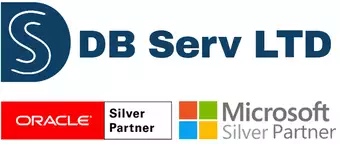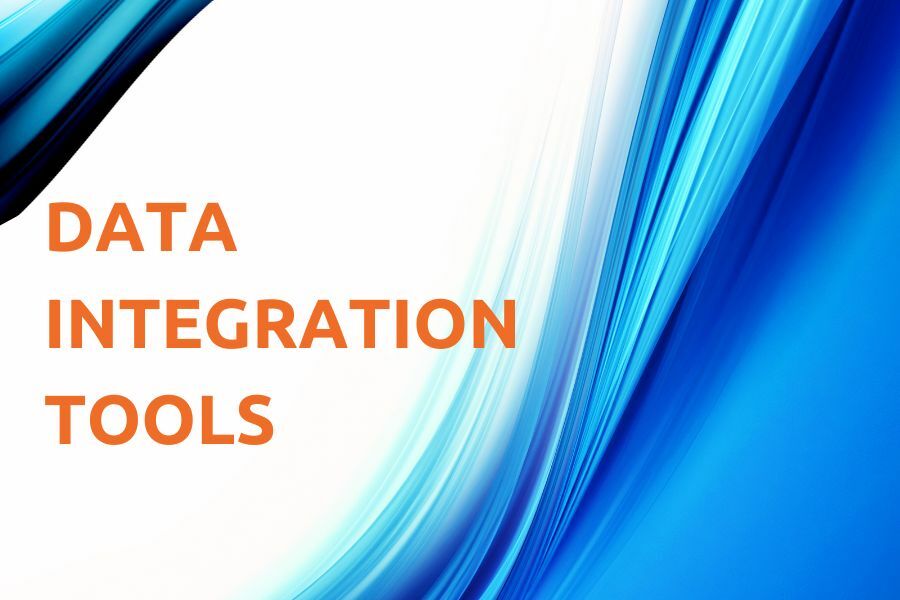Executives need to process a wide variety of data from multiple sources to maximize business potential and make informed business decisions. Conducting such operations manually is very challenging and time-consuming. Therefore, an increasing number of entrepreneurs are turning to innovative data integration tools to expedite work and stay ahead of competitors.
A report by Precedence Research shows that the data integration market was valued at $12.14 billion in 2022. Experts predict that this figure will continue to rise, reaching $39.25 billion by 2032. Consequently, we can expect increased attention to this technology. In connection with this, the DB Serv team has created a detailed guide for you on working with data integration tools and has compiled the top 10 products in the industry for implementation in your business.
Introduction: What is Data Integration?
Data integration is the consolidation of disparate information from multiple systems and sources into a unified repository for further processing by users. This process is facilitated by a data integration tool, which is a computer program that automates the consolidation of data. It also collects, combines, and manages information from various systems of your choosing.
Key Differences: Data Integration vs. ETL
In addition to a data integration solution, there are Extract, Transform, Load (ETL) tools, which are also important programs for managing information. However, they have specific differences that we have outlined in the table.
Data Integration Tool
- ● Purpose: Unify data from different sources for processing.
- ● Consolidation Method: Consolidates disparate data in a unified form.
- ● Work Processes: Data replication and virtualization, ETL processes, API integration.
- ● Features: ETL, data cleansing, data management, and quality, etc.
ETL
- ● Purpose: Extract, transform, and load information for analysis into a target database or warehouse.
- ● Consolidation Method: Consolidates data in the target repository by gathering it from different sources.
- ● Work Processes: Extraction, transformation, and loading of data.
- ● Features: Primarily ETL tasks.
Understanding Data Integration vs. Data Ingestion
Alongside a data integration tool, companies employ the practice of data ingestion. This is the process of collecting and moving information from one location to another for more efficient storage. In most cases, the movement is into a data lake, database, or warehouse.
At first glance, integration and ingestion may seem similar, but they have fundamental differences.
Data Integration
- ➡️ Purpose: Unifying any data from different sources, transforming it, and loading it into warehouse.
- ➡️ Goal: Providing reliable data for analysis and reporting.
- ➡️ Quality: High quality is guaranteed through data transformation and filtering.
Data Ingestion
- ➡️ Purpose: Collecting and transferring data to a chosen warehouse from specific sources.
- ➡️ Goal: Aggregating information for processing.
- ➡️ Quality: Automatic quality improvement is absent.
Despite the differences, data integration tools and data ingestion are crucial components in processing information at the corporate level.
The Role of Data Integration Tools
Technology integration provides software for enterprises of all types to establish a seamless, continuous, and productive data flow at every level of operation. This ensures stable access to all corporate information 24/7, allowing you to easily extract only the necessary data sets. This helps you grow your business by relying on dependable and precise measures that show the actual state of affairs in your company.
Primary functions of data integration tools:
- ➡️ Access to data from various sources including databases, corporate systems, mobile applications, social networks, websites, and more.
- ➡️ Recording into unified systems, such as data warehouses, for subsequent extraction, modification, and deletion.
- ➡️ Data processing to transform different types and formats, as well as for aggregation, merging, replacement, and merging.
- ➡️ Simple interface to facilitate user interaction with a data integration tool.
- ➡️ Management and optimization of the integration to handle errors, monitor operation execution, enhance security, collect statistics, and more.
All these and other functions of data integration tools ensure simplified and efficient provision of accurate information for forecasting, development strategies, and making important decisions.
Types of Data Integration Tools
In the world of data, there are various integration solutions with different types and goals. We’ll examine them closely to determine which one is most suitable for your business:
● On-Premise Data Integration Tools: Necessary for companies using local networks or private clouds to collect, process, and store data in various formats. These tools come with their own connectors for batch loading sets of information from different sources.
● Cloud-Based Data Integration Solutions: Delivered as a platform integration as a service (iPaaS). They provide enterprises with access to data from numerous sources and cloud storage for management.
● Exploring Open-Source Data Integration Tools: This type is an alternative to commercial tools. You can make changes to the code based on your needs, ensuring control over internal data.
● Proprietary Data Integration Solutions: Paid solutions aimed at efficiently and reliably meeting specific requirements. They are individually tailored to the needs of the acquiring company.
How to Find the Best Solution: Factors Influencing the Choice of Data Integration Tools
When choosing a tool suitable for your business, consider the following factors:
➡️ Scalability: Analyze your needs and data integration volumes to obtain an optimal solution in terms of performance and scalability.
➡️ Required functionality: Specify the capabilities of the selected data integration tool to choose the optimal solution and avoid overpaying for unnecessary features.
➡️ Cost: Evaluate multiple proposals and calculate implementation expenses. Then, compare the amounts with your budget to choose a cost-effective option.
➡️ Reviews and provider ratings: If you’re choosing a business solution, it’s crucial to get to know the experiences of other clients. When searching for open-source software, rely on the level of community support.
Top Data Integration Tools for 2024
After studying the features, functions, selection criteria, and types of data integration tools, let’s familiarize ourselves with the best representatives in the market.
1. Altova
Altova is a data integration tool aiming to transform and map information in XML, JSON, and other file formats. It operates on the Windows platform and has a graphical interface to simplify user operations. Altova performs the following data operations:
- ● Real-time data transfer from one source to another.
- ● Mapping, which involves merging multiple data sets into a single unique instance.
- ● File format conversion.
Altova enables you to support simple projects that need integrating information from diverse sources without extra expenses quickly and effectively.
2. Informatica
Informatica belongs to cloud data integration tools designed explicitly for enterprise operations. Thanks to ETL operations, it easily collects and combines data from different sources. The advantages of Informatica include:
- ● Working with large data sets.
- ● Recognizing metadata to optimize complex integrations.
- ● Managing information between systems and sources.
- ● Data masking and virtualization.
For some transformation operations, Informatica requires high performance, consuming large amounts of memory and computational resources. This makes it challenging for enterprises with limited budgets for technical expenses.
3. Talend
Talend is an open-source solution for managing corporate data. It includes additional capabilities such as:
- ● Integration of third-party apps and APIs.
- ● Data preparation for processing.
- ● Managing and improving the quality of obtained information.
- ● Working with big data.
Talend is more suitable for technically savvy users, as programming skills are necessary to understand all the program’s features. Among its advantages is configuring the data integration tool for local and cloud ETL tasks using NoSQL databases, Spark, and other technologies.
4. SnapLogic
iPaaS platform that allows you to integrate apps, data, and clouds. Compared to other tools, SnapLogic has limited functionality. Nevertheless, it provides valuable capabilities:
- ● Real-time batch data processing.
- ● Management of information quality and security.
- ● Extraction of data in any format from various sources.
- ● Provision of more than 500 connectors for data synchronization.
The data integration tool has extensive community support, making it easy for beginners to find useful materials, instructions, and assistance in problem-solving on forums. Additionally, SnapLogic has a user-friendly browser-based interface for non-technical users.
5. Astera
Comprehensive automated data integration platform that utilizes artificial intelligence. Among its key features:
- ● Unstructured data extraction from various sources.
- ● Cleaning and loading into a user-selected destination.
- ● Data warehousing.
- ● Code-free management of APIs and EDI.
Astera offers users built-in quality functions, ready-made connectors, and process orchestration for quick results. Moreover, it doesn’t require coding, providing a simple drag-and-drop interface and all-in-one packages.
6. Jitterbit
Data integration tool that facilitates API connections with third-party apps and services. This gives your company the ability to:
- ● Consolidate data from disparate sources for business analysts.
- ● Use AI features to automate and expedite processes.
- ● Match similar fields and apply over 300 formulas to simplify data transformations.
- ● Utilize a virtual environment to test various integrations.
Ideal for conducting complex operations, it has a somewhat complex interface that may impact your employees when they start to work with it.
7. Dell Boomi
Data integration tool that can be used locally, in the cloud, or in a hybrid environment. It comes with or without code and provides:
- ● Ready-made connectors for various operations.
- ● Development platform with drag-and-drop functionality.
- ● Centralized data integration management with a unified portal for reporting.
- ● Strong community support.
Both small and large organizations use Dell Boomi. It has a pleasantly simple design and interface, making it easy to integrate with other apps and services.
8. Oracle
The Oracle Corporation product offers two variants of tools – Oracle Data Integrator (ODI) for handling big data and ODI Enterprise Edition for processing corporate information.
The advantages include:
- ● Easy integration of different technology stacks.
- ● Built-in support for big data and fast processing.
- ● The ability to use custom code to manage data sets.
Oracle’s data integration tool also provides a cloud platform for data integration. It has a browser-based interface and easily connects with SaaS solutions. All of this ensures high performance and ease of use.
9. Pentaho
While primarily a business analytics tool, Pentaho also has basic functions for data integration from various sources. Additional features of Pentaho include:
- ● Online Analytical Processing (OLAP).
- ● Intelligent data analysis.
- ● Extraction and migration of information.
- ● Reporting and a convenient tool for business analysis.
Weaknesses of the data integration tool include a complex setup process and limited support for sources. However, with the right installation approach, you can expand the range of systems and apps from which data needs to be pulled.
10. Zigiwave
A tool supporting the streaming transfer of information, Zigiwave allows for automated integration and gathering of necessary data in a few simple steps. It is applied in IT Service Management, DevOps, cloud solutions, monitoring, and CRM. The program offers users:
- ● An easy-to-understand and use interface.
- ● Accessible deep integration functions for configuring the display of objects at different levels.
- ● Reliable customer support that helps promptly resolve issues.
- ● Numerous instructions for self-operation and getting acquainted with the tool.
The interface of the data integration software has no code, making it simple to integrate with other systems or apps. That’s why Zigiwave is widely used in IT Service Management, DevOps, cloud solutions, monitoring, and CRM.
Do You Need a Data Integration Solution?
Every enterprise collects data from multiple sources. Moreover, multiple systems may be simultaneously used to store this data. When deciding on matters that affect the entire company, it’s important to analyze all relevant data points, including sales figures, department productivity, net profit percentage, and other related metrics. A data integration tool comes in handy to collect essential information systematically, quickly, and accurately.
Looking for help with managing your data efficiently? DB Serv specialists in database integration software can assist you in choosing and integrating the best solution into your infrastructure.

